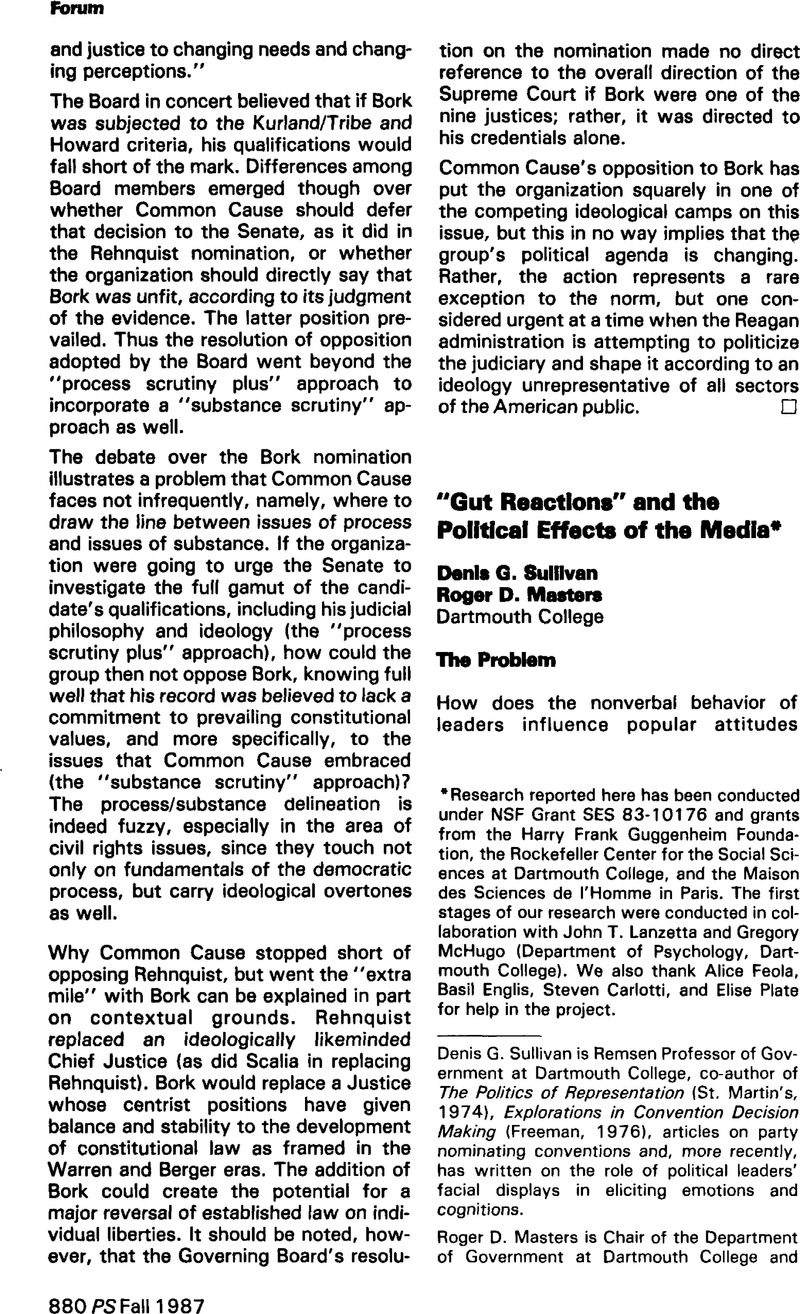Published online by Cambridge University Press: 21 November 2022

Research reported here has been conducted under NSF Grant SES 83–10176 and grants from the Harry Frank Guggenheim Foundation, the Rockefeller Center for the Social Sciences at Dartmouth College, and the Maison des Sciences de l'Homme in Paris. The first stages of our research were conducted in collaboration with John T. Lanzetta and Gregory McHugo (Department of Psychology, Dartmouth College). We also thank Alice Feola, Basil Englis, Steven Carlotti, and Elise Plate for help in the project.